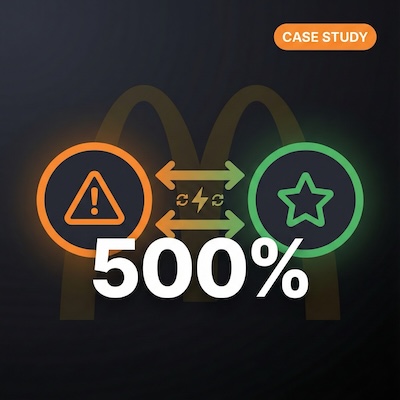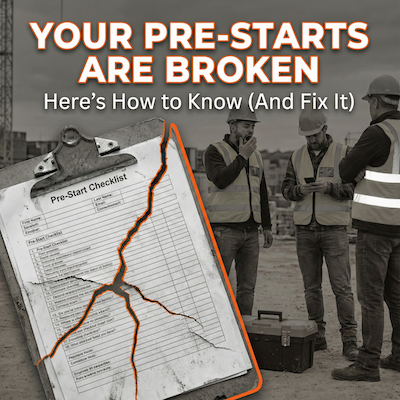As the trucking industry continues to battle an 80,000-driver shortage with aging workforce demographics, fleet managers are discovering that competitive pay alone isn't solving their retention challenges. A more fundamental issue lurks beneath the surface: a recognition deficit that leaves good drivers feeling invisible until they make a mistake.
"When a driver gets told, 'go see safety,' it's usually, 'ah, what did I do now?'" notes Chris Harris on his Trucking Risk and Insurance Podcast. This punishment-focused approach creates a culture where safety departments become what Harris candidly calls "the Oh shit department" – a place drivers dread rather than engage with.
But an innovative approach is gaining traction across North America's trucking fleets – one that transforms how companies recognize the consistent performers who form the backbone of their operations.
The Invisible Driver Problem
The industry faces a fundamental challenge that undermines both safety efforts and driver satisfaction: consistent performers go unnoticed while attention focuses on mistakes.
"If I do everything right, I get nothing," explains a driver quoted by James Kell, co-founder of Scratchie, during a recent podcast appearance. This recognition gap creates a perverse incentive structure that demoralizes those who perform well day in and day out.
Even as telematics systems provide unprecedented visibility into driver performance, this data is typically used to identify problems rather than celebrate success. This approach reinforces the perception that these technologies exist primarily for surveillance rather than support.
"The moment if I do everything right, I get nothing." - Truck Driver
Inverting the Table: From Surveillance to Celebration
The solution centers on flipping this paradigm. Instead of using telematics data solely to identify concerns, forward-thinking companies are now using this same information to recognize excellence.
"What we've done is inverted that table," explains Kell. "Let's switch it around and let's find out who's the least risky. They're at the top of the table, click a button and they get sent a Scratchie."
This approach transforms how drivers perceive monitoring technology – from intrusive surveillance to potential recognition. The impact on driver morale is immediate and significant.

How Recognition Works with Scratchie
The recognition process is designed to be both impactful for drivers and efficient for supervisors:
- Performance Identification: Scratchie integrates with existing telematics providers like Geotab to identify drivers demonstrating safe behaviors
- Supervisor Notification: Supervisors receive recommendations highlighting top performers
- One-Click Recognition: With a single click, supervisors can send recognition to deserving drivers
- Engaging Experience: Drivers receive an interactive "scratch card" notification with potential rewards
- Immediate Gratification: The element of surprise and immediate recognition creates a powerful dopamine response
This system addresses the core psychological needs that drive workplace engagement and satisfaction.
The Science of Driver Motivation
The effectiveness of this approach isn't accidental – it's rooted in well-established psychological principles. Kell references self-determination theory (by researchers Deci and Ryan), which identifies three fundamental psychological needs:
- Autonomy: The feeling that you have control over your decisions
- Competence: The feeling that you're good at what you do
- Relatedness: The feeling of connection with others
Traditional safety approaches often undermine all three needs – drivers lack autonomy under strict regulations, their competence is only discussed when they make mistakes, and their relationship with supervisors becomes adversarial.
Recognition systems like Scratchie directly address these needs:
"What that does between the supervisor and the worker is amazing. All of a sudden when you're a worker and you know that your boss knows that you're good, then it's a great feeling."

Real-World Applications in Trucking
Trucking companies are finding multiple applications for recognition technology:
1. Consistent Safe Performance
The most reliable drivers – those who continuously maintain safe operating practices – receive recognition that would otherwise be missing. This directly targets retention by acknowledging the "invisible" performers who might otherwise feel undervalued.
2. Skillful Incident Avoidance
As Chris Harris notes in the podcast: "I think a driver should be rewarded if they had great following distance and now a car comes in, cuts them off, hits the brakes, and the driver does a wonderful job of avoiding the crash."
These moments of skill and quick thinking often go unacknowledged in traditional safety systems, but they represent exactly the kind of performance companies want to encourage.
3. Transforming Telematics Perception
Companies investing in telematics face driver pushback due to the "big brother" perception. By using this same technology for recognition, they transform its reputation while maximizing return on investment.
Making Recognition Practical
Understanding the operational realities of trucking companies, modern recognition systems automate much of the process to ensure it doesn't create additional administrative burden:
"We know that supervisors have too much to do... The next release of Scratchie even brings the supervisor the three [drivers] that we would recommend... and he presses one button for each of those awards, and then he goes about his day."
This efficiency means recognition becomes sustainable rather than another abandoned initiative.
.avif)
The Results: A Transformed Safety Culture
Companies implementing recognition systems report significant improvements across multiple metrics:
- Enhanced driver retention
- Increased safety engagement
- Improved relationship between drivers and management
- Greater acceptance of safety technologies
- More proactive safety reporting
Most importantly, they create a balanced approach to safety that maintains necessary accountability while adding the positive reinforcement that has been missing.
"There's a need for both, isn't it? Like, every now and then you need a kick up the butt, but it shouldn't be the only tool. Probably the biggest tool should be encouragement." - James Kell
Getting Started with Driver Recognition
For trucking companies looking to implement recognition systems, the integration process is straightforward:
- Integration with existing telematics: Systems like Scratchie connect with providers including Geotab
- Define recognition criteria: Identify the behaviors you want to reinforce
- Set recognition budget: Determine appropriate reward levels
- Train supervisors: Simple training ensures consistent implementation
- Monitor results: Track key metrics to measure impact
The system is designed to complement rather than replace existing safety programs, adding positive reinforcement to balance traditional approaches.

Conclusion: Balance Creates Results
As the trucking industry continues to face unprecedented challenges with driver recruitment and retention, recognition technology offers a practical solution that addresses fundamental psychological needs while improving safety outcomes.
"What we are is a rewards layer," explains Kell. "So we can be added to these existing platforms... It just gets better, gets optimised because of the rewards layer."
By addressing the recognition deficit that leaves good drivers feeling invisible, trucking companies can create a more engaging culture that retains valuable talent while advancing safety goals. In an industry where every driver counts, celebrating excellence may be the most powerful retention tool available.
Email Scratchie if you're keen to keep the conversation going.










.svg)
